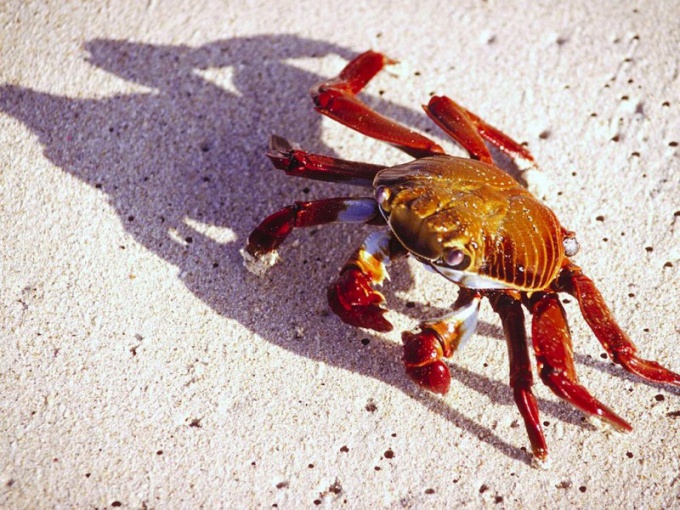You will need
- - clean white sheet of paper
- pencil
- - brush
- - paint for drawing
Instruction
1
Start to draw the crab's torso, which is covered with a hard shell having the shape of an almost smooth circle. Note using light strokes of the places where you will need later to select the color of the bulge of the back. Draw a pencil spines present on sides of carapace.
2
When the sketch of the torso of the crab is ready, draw animal legs. Please note that the rear four pairs can be of different thicknesses and sizes, depending on the type specimens. The crab each limb is divided into four segments. At the ends of the fourth, third and second pairs of legs draw spikes. The hind legs must be terminated by a joint with blade, which in appearance resembles a racket. Walking leg some crabs coated with a thin hair.
3
Draw claws on the front limbs. They look similar to pliers which grips come in different sizes: one smaller and the other larger. In most arthropods the left claw is much smaller than the right.
4
After the crab got the shell and legs, draw his head, which is the same as the whole body is divided into segments. On the head draw the eyes, which are similar to raised periscopes, and two pairs of small antennae.
5
Start colouring in your drawing. Don't forget that the color of the claws, limbs, and shell largely depends on the environment in which the individual lives. For example, drawing of a crab that lives in the algae, use olive and greenish hues, and the inhabitants of coral reefs needed to make the colorful shell and add to some pattern.
6
The bulge on the back highlight. On the claws and carapace of the crab draw spikes. Reflect the figure with a brush that clamps the animal covers a multitude of small protrusions and rear pairs of legs are hairs. Smooth and solid material, which covers the crab claws, very different from the chitin present in the shell, so to show these features, use different shades.
